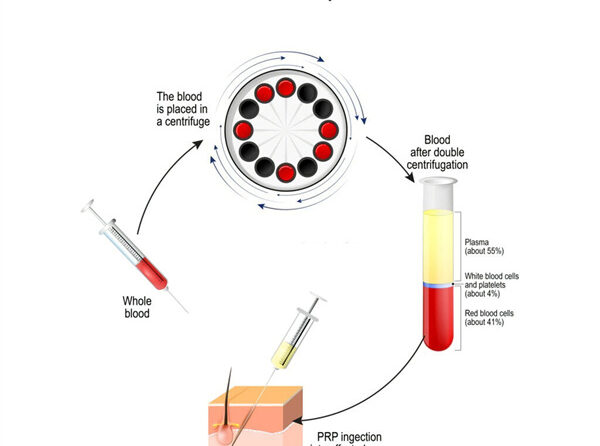Platelet-rich plasma (PRP) injection is a regenerative medicine procedure that uses a patient’s own blood to promote healing and tissue repair. PRP has shown great promise in treating a variety of conditions, including musculoskeletal injuries, chronic wounds, and even hair loss. In this blog, we will discuss the PRP injection procedure, including what patients can expect before, during, and after the treatment.
Before the Procedure
Before undergoing a PRP injection procedure, patients will typically have an initial consultation with their healthcare provider. During this consultation, the provider will evaluate the patient’s medical history, current condition, and any imaging or diagnostic tests that have been performed. If PRP is deemed an appropriate treatment option, the provider will explain the procedure and answer any questions the patient may have.
On the day of the procedure, patients should wear comfortable, loose-fitting clothing and avoid wearing jewelry or other accessories that may interfere with the injection site. It is also important to let the provider know of any medications or supplements the patient may be taking, as these may need to be temporarily discontinued before the procedure.
During the Procedure
The PRP injection procedure typically involves the following steps:
Blood Draw: The provider will first draw a small amount of the patient’s blood, typically from the arm. The blood is then placed in a centrifuge, which separates the platelets and growth factors from the rest of the blood components.
Preparation of PRP: The separated platelets and growth factors are then concentrated to create the PRP. The concentration may vary depending on the specific condition being treated.
Injection: The provider will then use a syringe to inject the PRP into the affected area. The injection site may be numbed with a local anesthetic beforehand to minimize discomfort.
After the Procedure
Following the PRP injection, patients may experience some soreness, swelling, or bruising at the injection site. This is normal and should subside within a few days. Patients may be advised to rest and avoid strenuous activity for a short period of time following the procedure, depending on the specific condition being treated.
Patients may also be advised to receive multiple PRP injections over a period of several weeks or months to achieve optimal results. The exact number and frequency of injections will depend on the specific condition being treated and the patient’s individual response to treatment.
In conclusion, PRP injection is a minimally invasive regenerative medicine procedure that uses a patient’s own blood to promote healing and tissue repair. The procedure involves a blood draw, preparation of PRP, and injection into the affected area. Patients may experience some soreness or swelling following the procedure, but can typically resume their normal activities within a few days. If you are interested in PRP injection as a treatment option, talk to a qualified healthcare provider to see if it may be right for you.








